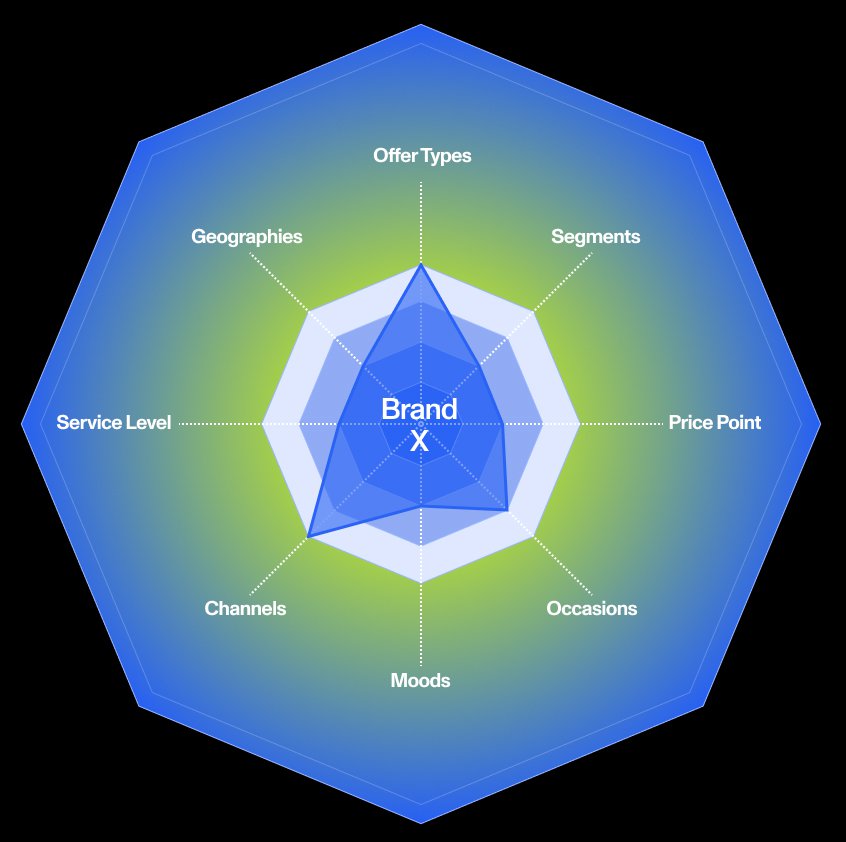Brand Extension & Growth
Leverage Your Brands as Inspiration for Business Growth
Overview:
What is Brand Extension?
A robust brand extension strategy is essential to prosper and maintain relevance in today’s hyper-competitive marketplace. In some ways, brand extension represents the most efficient and logical way to achieve profitable brand growth, yet many companies struggle with how far to stretch. Play it too safe and the likely result will be close-in, ho-hum line extensions that underwhelm customers and are short-lived in the market. Stray too far from your brand’s core positioning and you risk diluting valuable equity.
The Components of Effective Brand Extension
In order to be successful when extending brands, it is important to make sure you are remaining true to your positioning and what you stand for. However, while respecting guardrails and protecting equity is imperative, it's also important to view brands as a source of inspiration for innovation and new product development.
When considering possible paths for extension, it is important to look at brands across multiple dimensions—not just tangible attributes (such as product categories and usage occasions), but intangible dimensions as well (e.g., persona and emotional benefits).
Brand Permissions

Our Process
Questions
Addressed
- Which brand attributes represent the most lucrative opportunities for extension/growth?
- What are brands’ “bounds of extendibility”— territories that should be considered off limits?
- Which brand-centric growth opportunities are the most financially lucrative for the business?
Typical
Challenges
- The brand’s positioning and key attributes are not as well understood as they should be
- Finding intersections between “big ideas” and opportunities that are consistent with brand positioning
- The temptation to play it safe by resorting to close-in, “flavor of the month” line extensions
Ensuring
Success
- Thinking big; considering the brand as a source for inspiration and transformational growth
- Considering both tangible and intangible attributes of the brand as means for extension
- Identifying a balanced portfolio of extensions (i.e., both conservative and transformational)
Get to Know More
Learn How to Leverage Your Brand as Inspiration for Business Growth
Avoid Stagnation Through Brand Extension
Brand Extension & Growth Case Studies
Let’s get in touch!
Brand Extension & Growth FAQs
A brand’s growth strategy is its plan to boost market share, customer footprint, revenue, and overall profitability. This may entail (among other tactics) selling more existing products in existing markets, selling existing products in new markets, introducing new products in existing markets, and/or launching new products in new markets.
An effective brand growth strategy should be both inside-out and outside-in. Specifically, it requires a sophisticated understanding of market dynamics (customer wants and needs, competitive forces, etc.) and a thorough understanding of how each brand within the current portfolio is positioned in the marketplace (through the eyes of customers).
A brand extension is when an established brand leverages its existing reputation and image to enter a new product category or market segment (either adjacent or entirely new). This growth strategy allows the company to tap into existing customer loyalty and brand equity to facilitate the adoption of new products. Additionally, it helps the brand to diversify its portfolio and reduce dependency on its core offerings.
One example is when Amazon extended its online retail services brand to the smart home market with the Amazon Echo, a smart speaker that integrates Amazon's Alexa voice assistant. The Echo represents an entirely different category offering from its core (i.e., a consumer product vs. an online retail website). It not only brings Amazon’s e-commerce capabilities into the home in a new way but also opens up a plethora of opportunities for smart home integrations and data gathering.
A line extension involves launching a new product for an established brand within its existing category. This is a very common type of growth strategy, as it requires far less incremental investment and reduces overall business risk (vs. launching a new-to-the-world brand).
For example, Coca-Cola launched Coke Zero as part of its product line to provide a zero-calorie option of its Coke drink appealing to healthy individuals while keeping the familiar taste intact. This strategy allows the brand to reach a range of customers and address consumer preferences without losing its core identity. Additionally, it boosts visibility on store shelves and strengthens consumer awareness within the product category.
FullSurge believes successful brand extension is a delicate balancing act between risk and reward. Playing it too safe often results in ho-hum line extensions with minimal market impact. Conversely, pushing the “bounds of extendibility” too far runs the risk of diluting (or even destroying) hard-earned brand equity.
We also believe that when it comes to growth, a strong brand positioning can be a valuable source of inspiration—not just a guardrail for protecting brand equity. The key is to tap into and leverage higher-order, more emotional attributes of a brand (as opposed to tangible attributes like product features and functional benefits). Doing so effectively expands the brand’s “frame of reference,” and gives it far more permission to extend beyond its immediate product category (or close-in, safe adjacencies).






